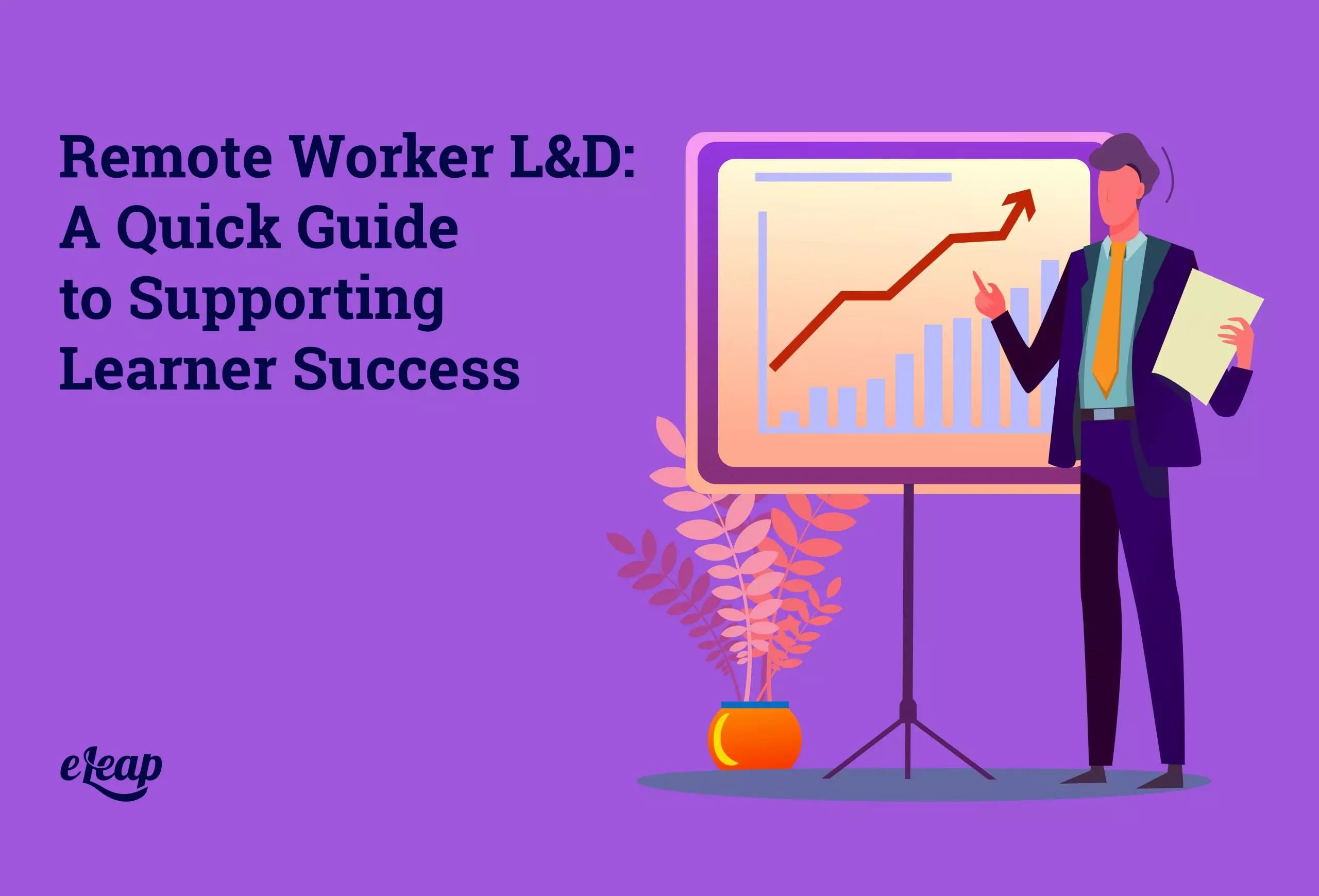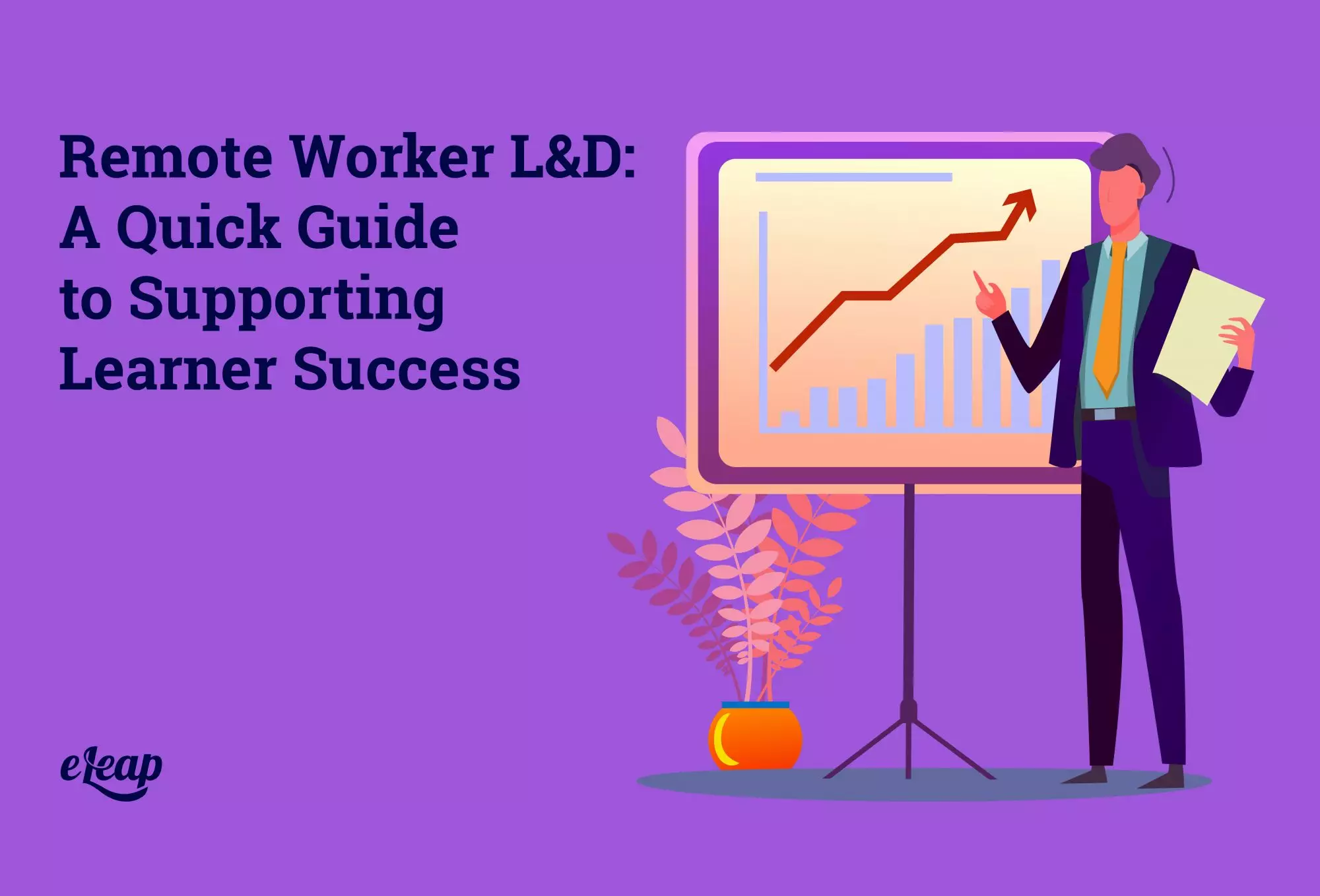Remote Worker L&D: A Quick Guide to Supporting Learner Success

Learning and development (L&D) is a vital consideration for many of today’s organizations. L&D goes so much deeper than mandatory corporate training or required ongoing education for licensed professionals. L&D delivers the ability to upskill, to close skills gaps, and for your employees to chart a path toward a more rewarding career within the organization. For the remote worker, learning and development initiatives offer a chance to get the tools and resources to contribute effectively to the overall goals and objectives of the organization.
However, COVID-19 and the ongoing need for remote work might seem to have thrown a wrench in the works. After all, if your employees are all working remotely, can they really complete the courses needed for learning and development? Yes, they can, and remote work doesn’t need to pose a threat to L&D success.
However, you’ll need to know a few things to support your learners. We’ll cover what you need to know below.

It Starts with Your LMS
If you don’t have a modern learning management system (LMS), then your remote workers will be at a distinct disadvantage. Your learning management system should support complete remote access to the full catalog of courses and modules. Not sure that yours is up to the task? Now’s the time to verify. Migrating to a new LMS, or modernizing an outdated system, will require time, so start early.
Make Sure Your Content Is Up to Par
In addition to a modern LMS, you need to take a long, hard look at your content. Is it modern or outdated? Does it deliver an optimum learner experience or is it dull and boring?
Not only do you need to consider how engaging and enjoyable your content is, but you also need to ensure that it displays correctly. Remember that your employees are remote. That means they’re not in the same building and not using the same connection and display technology.
One might be using a tablet and another is on a laptop, and yet a third might be trying to complete courses on their smartphone. Does your content display correctly on all devices? Is it optimized for even slow Internet speeds?
If you answer no to those questions, then you need to rethink your learning and development initiative. Without optimized, engaging content, you’re not going to see the buy-in that you need from your employees. And without buy-in, your L&D initiatives are dead in the water.
Make Learning Part of Your Culture
Everyone wants a positive business culture. One that values learning and development is essential to success today. However, creating a culture of learning and growth is harder than it might seem.
It requires more than just adding “we value learning” to your company mission statement, or asking new hires how they feel about ongoing training. It requires intentionality and planning.
One way to start changing your culture for the better is to make learning-related questions part of your regular check-ins and meetings with remote workers. Ask them what modules they completed, or what they felt was the most valuable takeaway from a particular course. Ask what they need from you to ensure they can complete their learning promptly.
Do you need to delegate some of their responsibilities? Do they need new hardware in their home office? Do they need more structure or better-defined responsibilities?
Talk about learning and development during team meetings, as well as during company-wide video meetings, too. The more you make learning and development front and center, and the more your employees see that the C-suite values L&D, the more likely they will be to buy in, as well.
Make Learning Convenient
In addition to ensuring that learning is embedded deeply in your company culture, you also need to make it convenient. What does that require, though? It’s all about agility.
Think about native iOS and Android apps, an accessible LMS for users with PCs and laptops, and a dedication to ensuring that your learning and development content is always on and always accessible. Your learners should have the ability to learn when it fits their schedule best – on the go, when they’re done with work for the day, on their lunch break, or whenever else it works. An agile approach to L&D will help ensure that you’re able to make it convenient for everyone.
Monitor Progress
You would never ignore performance management. The same concept applies to learning and development. You need to monitor each employee’s progress through the content.
When you monitor their progress, you can identify several key elements, including:
- Difficulties with content due to a lack of knowledge or skills that can then be used to create or assign additional L&D courses.
- Lots of time spent on particular modules can indicate either poor-quality content or that the employee is struggling in that area and needs help.
- Rapid progress through content indicates that an employee has particular strengths and talents that can then be used to tailor their development plan.
Give Them a Place to Be Social
One of the most significant challenges for remote learners is the lack of connectivity with others. With in-person learning, there’s a direct connection with other people. The learner might be sitting in the same HR training center with other employees. They can share notes over lunch with coworkers about their training experiences.
That connection is lacking in the remote work world, so businesses need to provide employees with a virtual place where they can be social. Thankfully, digital technology makes this pretty simple. You could create any of the following:
- L&D-related message boards
- Chat systems
- Video conference systems
- Virtual team learning events
- Webinars
Accelerating Your L&D Efforts
As you can see, quite a few things must come together to help ensure success for remote learners. However, it’s not impossible. If you’re able to implement the tips and tricks we’ve discussed here, you’ll find that it’s relatively simple. However, it does require that you approach the situation with a strategy and that you have a modern LMS in place that can support your learners.